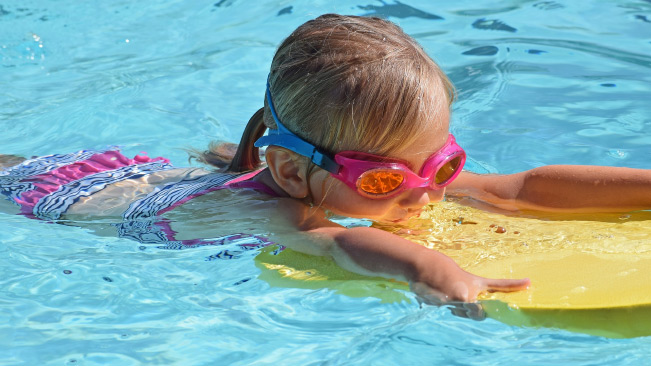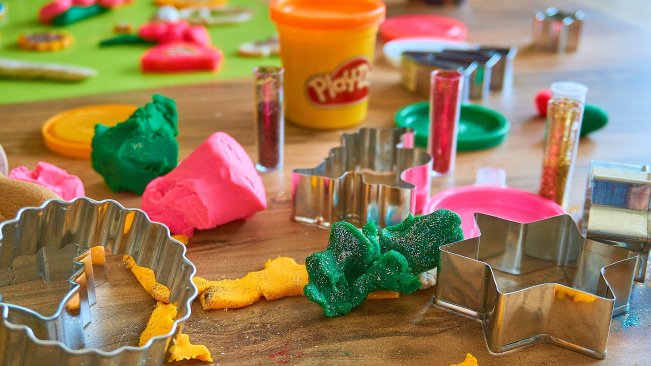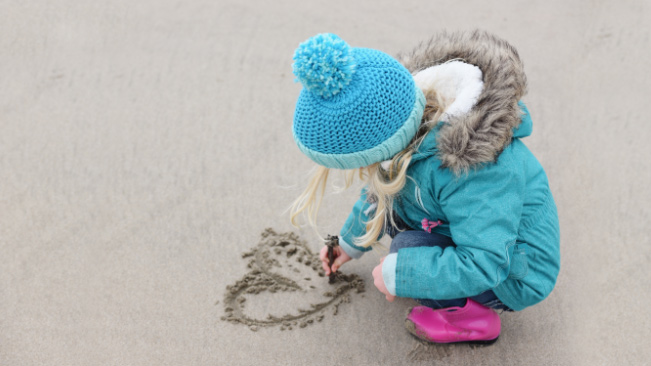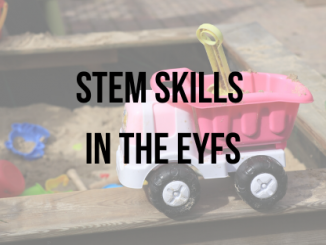There are an awful lot of products on the market aimed at getting children writing, often involved words to trace or dots to join. The problem is that these are often aimed at or given to children, who are not even nearly ready to write, albeit with good intentions.
All parents want to give their child a head start, and it can be especially tempting to push reading and writing as they are such vital skills. The problem is if you introduce writing and letter formation before a child is ready, they are likely to slip into bad habits that will be difficult to correct later on. Furthermore, writing for a purpose is fundamental to life and these trace the letters book often deal with the abstract for example, teaching a few letters and then having the child use those letters in copying out a series of words. In the real world, we don’t do this! We write shopping lists, notes, instructions, stories and so on. Giving writing a context, meaning and purpose from the off is a great basis for setting children up for an enjoyable and successful relationship with writing.
Before children are physically ready to write they need to develop strength and control in their core, limbs, hands and fingers (Berry, 1999) They need a good level of special awareness and directional control and they need hand-eye co-ordination to carry out the task. These building blocks to writing can be mastered without the use of a pen!
Running
In order to develop muscles and fine motor skills for writing children must first develop gross motor skills and strength in major muscles groups.
Running around and playing outdoors requires the strength to be able to stand, the muscles in the legs and core to be developed enough to support this type of movement and the balance to be able to move around. Running also involves the ability to co-ordinate the limbs in such a way as to enable speed and of course the ability to negotiate obstacles, changing direction or speed as required. Running builds up strength and agility in major muscle groups, forms neural pathways related to controlling the limbs and changing direction, and develops special awareness.
Riding a bike
Riding a bike, whether a trike, balance bike or two-wheeler develops children’s core strength as they learn to balance on the bike itself. Fir balance bikes and two wheelers this balance development is even more significant. Further more children gain strength and control in their hands and wrists as they learn to grip and manipulate handle bars. This translates directly to writing.
Playing football
In addition to incorporating running skills playing soccer requires that children are able to use hand-foot co-ordination and special awareness in kicking a ball. In aiming to score a goal these skills are honed further and children gain awareness of trajectory and directional aim, which will be used in aiming to form letters.
Climbing Trees
Climbing trees is a fantastic childhood activity which sadly seems to be dying out due to our risk adverse culture, but it has many benefits to pre-writing skills. As children plot a path to climb the tree, they are making calculations about their own ability, strength, arm span, grip as well as considering direction and aim. All of these skills, and the awareness gained through them, is invaluable in putting pen to paper. Physically, climbing trees develops excellent grip in the hands, mobility in the wrists and upper body strength important for control over the arms.
Swimming

The vital step of honing gross motor skills plays to children’s strengths as physical learners “A young child can learn only what her brain is primed and ready for. And in the early years, that’s everything the body has to teach—the tangible, physical, and sensory qualities of the world around her.” (Connell & McCarthy, 2013) Swimming is an extremely rich sensory experience, with the water providing plenty of resistance to build up muscle strength as well as sensory feedback that allows children to gain a better awareness of their bodies and how to control them.
Using playdough

Being able to hold a pen, a thin cylindrical object, is something that we as adults often take for granted but it is actually the result of a long series of developing strength and skill; think back to tiny babies, who are not even able to control their limbs enough to reach out towards an object they want. These tiny babies begin tracking objects with their eyes, then follow movement with their heads before batting at toys and then learn to grasp and manipulate them (for example, by shaking a rattle)
Around 6-9 months babies begin to develop a kind of pincer grasp; using the thumb and forefinger to pick up smaller objects, usually food. As children get older, they need to build up strength in their hands, wrists and fingers in order to be able to not only hold a pen but manipulate it to form letters and symbols.
Playdough gives muscles in the fingers, hands and wrists a work out, squeezing, squashing, rolling and pinching build strength in these muscles in a way that everyday actions don’t; playdough tools that involve squashing, squeezing, pressing and cutting are also useful resources.
Cutting
The movement involved in using scissors is generally not practiced but is fantastic for strengthening finger muscles, particularly those in the index finger which is important for writing. Scissor control also requires special awareness and hand eye co-ordination, planning routes and manipulating where the scissors go.
Cutting different textures and materials requires slightly different techniques and levels of pressure and will not only build strength but also bodily awareness of how to use pressure and direction to achieve different results, all of which is critical for writing.
Using stickers
Many children love stickers! And peeling stickers off their backing sheet develops fine motor skills and hand-eye coordination. Stickers are often thin and require the use of a pincer grip to remove them from the backing paper. This controlled pincer grip is an excellent pre-writing skill.
The pressure to have children write earlier and the prevalence of the follow the dots activities on the market for very young children can lead Early Years settings to believe that they have to provide such activities and get children writing at a young age, but when we buy into this we actually do children a disservice, forcing them to do something before they have the appropriate skills. Keeping the focus on building pre-writing skills in the EYFS is key in enabling children to develop a healthy relationship with writing when the time comes.
References:
Berry, J. (1999) Fine Motor Skills in the Classroom, OTR/L, Therapro Inc.
Connell, G. & McCarthy, C. (2013) A Moving Child Is A Learning Child: how the body teaches the brain to think (Birth to age 7) Free Spirit Publishing







